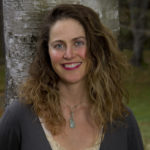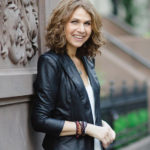Yoga For Pain Relief

Yoga For Pain Relief
We often find metaphors for life in our yoga practice, and those of us who come to yoga stiff or weak are only too familiar with confronting our edges. In most urban, contemporary societies, we are frequently exposed to confrontation: in our communities, our relationships, our jobs—the list goes on. Our success in dealing with confrontation and the stress it generates depends on our ability to recognize and adjust to what presents itself in those situations. It is often easy to avoid dealing with confrontation until it reaches a certain level of intensity and we are forced to address what stands in our way.
The Hidden Gift of Obstacles in Yoga
When our tools for dealing with confrontation are overwhelmed and when what we perceive as our very nature becomes threatened, our life systems—mental, emotional, and physical—begin to contract. If we ignore this contraction for too long, it can color the way we perceive our reality, and what is very unnatural to a healthy body begins to seem natural. Because this process occurs over extended periods, as in the aging process, we often lack the awareness that it is happening until we are beyond simple fixes.
Difficult Poses
Consider the beginner’s approach to difficult poses—even the relatively simple ones—that challenge flexibility, balance, or strength. These poses take our attention directly into areas of our body that are unfamiliar, painful, or unresponsive. This is often confronting. Stiff people have to learn how to work with pain, which is often intense, in order to remove the obstructions found in tight muscles or joints. Typically, this work is associated with movement where previously no movement existed or where it was extremely limited. The weak or overly flexible have to learn how to work without overworking, to create the support or resistance necessary to bring about the subtle movement of energy in the body to build stamina or strength.
It is a common experience for beginners to question why they lack movement or feeling in these areas in the first place and to wonder if there will ever come a day when it could be different. This is the beauty of the confrontation found in yoga, where opposites attract and working simultaneously with effort and non-effort is a very important lesson to learn.
Overcoming Resistance In Yoga
With many of the asanas that a beginner tackles for the first time, it is common to struggle with the opposing forces of particular actions found in a pose. Attempting to relax tight muscles is not easy when we are receiving a steady stream (or scream) of more demanding messages in the seemingly undecipherable language of pain. It can feel like the very resistance we experience has been protecting us from injury or overdoing something and that to surrender into this discomfort would be unwise.
Likewise, working with weak muscles to stay in a pose, to dig a little deeper, even for one more breath, seems to go against all of the yogic principles of nonviolence (ahimsa), and the anxiety that this can produce is real. Fatigue (mental and physical) seems to threaten our very existence, and every cell in our body is convinced that we’re approaching an injury or a near-death experience.
Hatha Yoga Is A Confrontational Journey
By its very nature, though, hatha yoga takes us on a confrontational journey that can produce the awareness required to overcome ingrained resistance and penetrate the dense matter of our consciousness. For those with chronically tight or weak muscles, the correct practice of asana with conscious breathing forces the mind into a very alert state and very quickly fills the gaps typically found in a beginner’s attention. This is a very important place to be. In it, we are given an opportunity to feel the power of this situation physically, to observe the dynamics of stress in an intense environment, and to overcome the mental or emotional struggle inherent in that predicament.
Of course, entering these situations in your practice requires a little preparation, and in the event of any preexisting conditions, it is beneficial and highly recommended to work with an experienced teacher who can suggest modifications to challenging poses. However, once you become familiar enough with your edge to gaze at what lies beyond it, an exterior guide will only be a distraction. Instead, you can reach inside yourself—toward your inner teacher—for guidance.
This is an excerpt from Gravity & Grace: How to Awaken Your Subtle Body and the Healing Power of Yoga by Peter Sterios.

Peter Sterios is a popular yoga teacher and trainer with over four decades of experience. He’s the founder of LEVITYoGA™ and MANDUKA™, as well as KarmaNICA™, a charitable organization for underprivileged children in rural Nicaragua. Sterios taught yoga at the White House for Michelle Obama’s anti-obesity initiatives for three years, and in 2018 he was invited to the Pentagon to share yoga’s therapeutic effects with the US Marine Corps. He resides in San Luis Obispo, CA. For more, visit LEVITYoGA.com.
Read Gravity & Grace today!
Sounds True | Amazon | Barnes&Noble | Indiebound









 Lauren Walker is the author of
Lauren Walker is the author of 
 Karen Brody is a women’s well-being and leadership expert who helps women journey from worn out to well rested and then dream big in their work and lives. A certified yoga nidra instructor, she is the author of
Karen Brody is a women’s well-being and leadership expert who helps women journey from worn out to well rested and then dream big in their work and lives. A certified yoga nidra instructor, she is the author of 